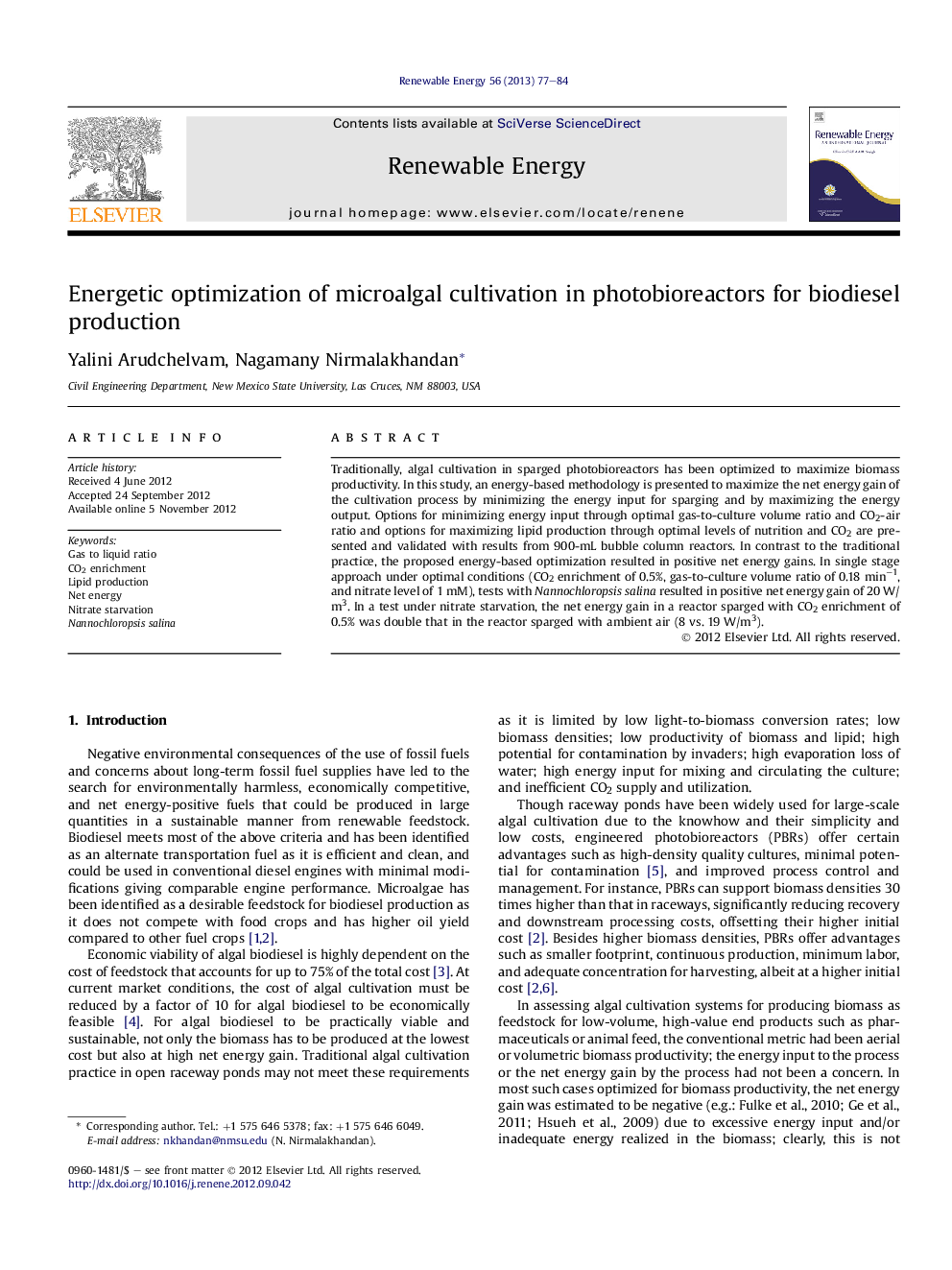| Article ID | Journal | Published Year | Pages | File Type |
|---|---|---|---|---|
| 300453 | Renewable Energy | 2013 | 8 Pages |
Traditionally, algal cultivation in sparged photobioreactors has been optimized to maximize biomass productivity. In this study, an energy-based methodology is presented to maximize the net energy gain of the cultivation process by minimizing the energy input for sparging and by maximizing the energy output. Options for minimizing energy input through optimal gas-to-culture volume ratio and CO2-air ratio and options for maximizing lipid production through optimal levels of nutrition and CO2 are presented and validated with results from 900-mL bubble column reactors. In contrast to the traditional practice, the proposed energy-based optimization resulted in positive net energy gains. In single stage approach under optimal conditions (CO2 enrichment of 0.5%, gas-to-culture volume ratio of 0.18 min−1, and nitrate level of 1 mM), tests with Nannochloropsis salina resulted in positive net energy gain of 20 W/m3. In a test under nitrate starvation, the net energy gain in a reactor sparged with CO2 enrichment of 0.5% was double that in the reactor sparged with ambient air (8 vs. 19 W/m3).
